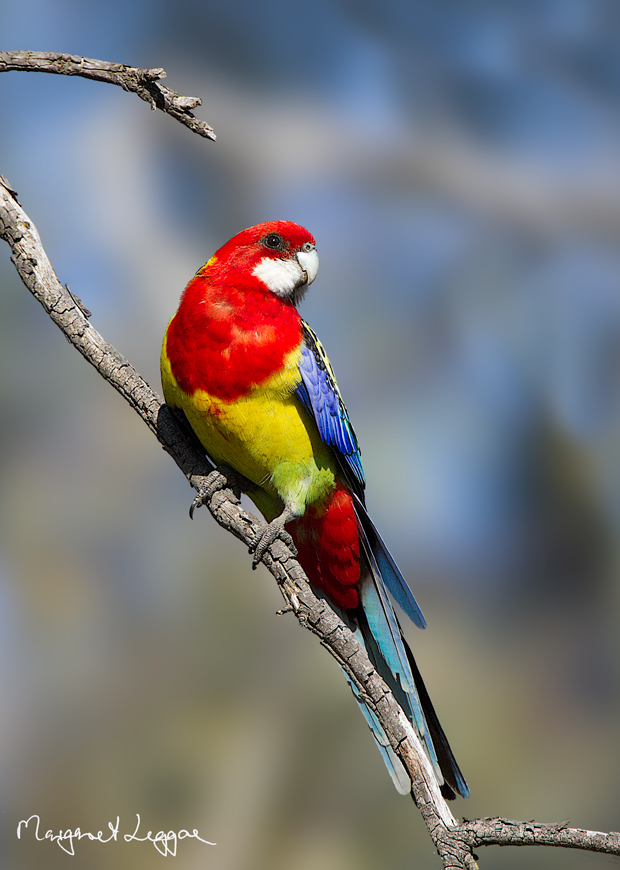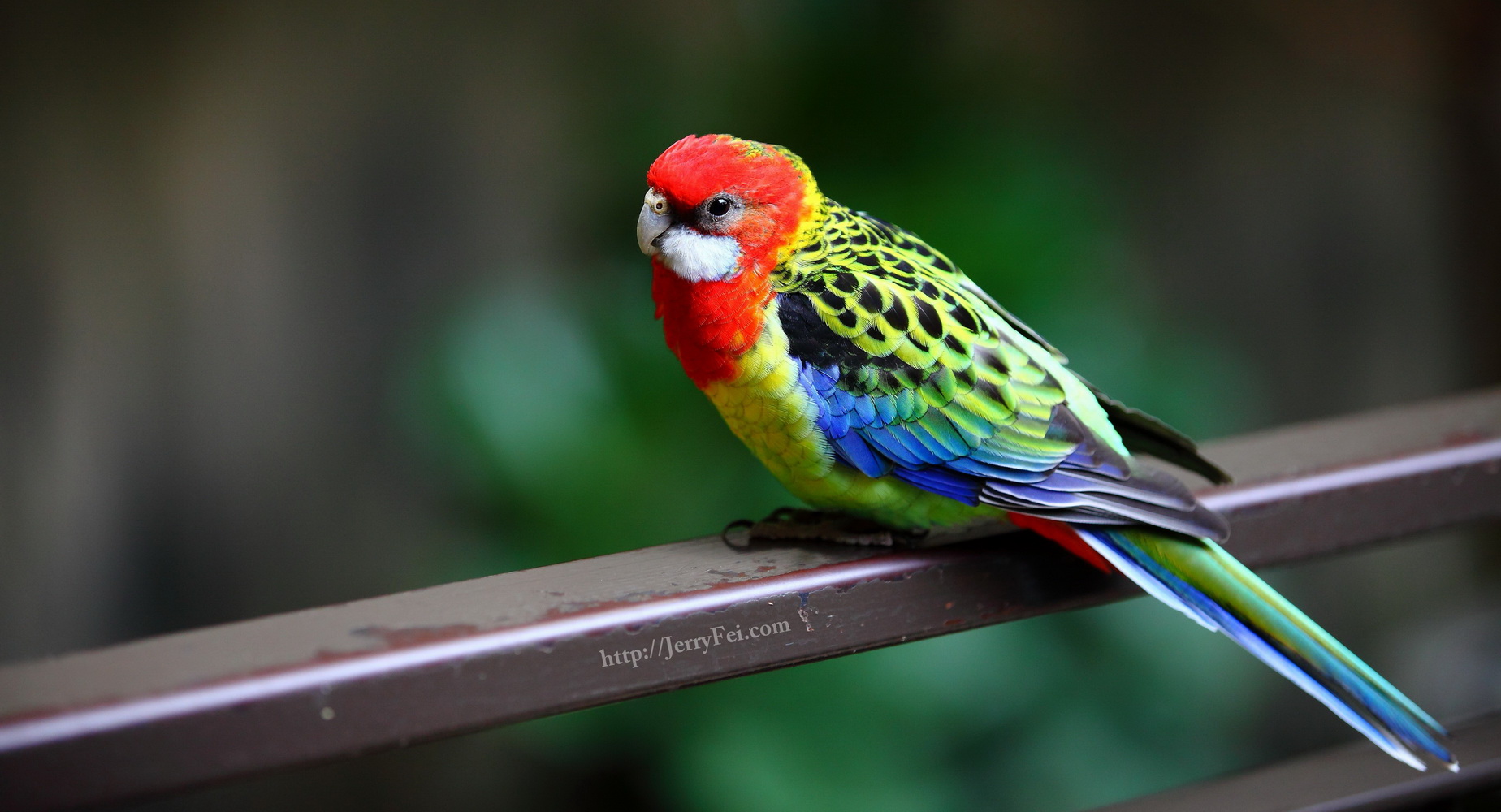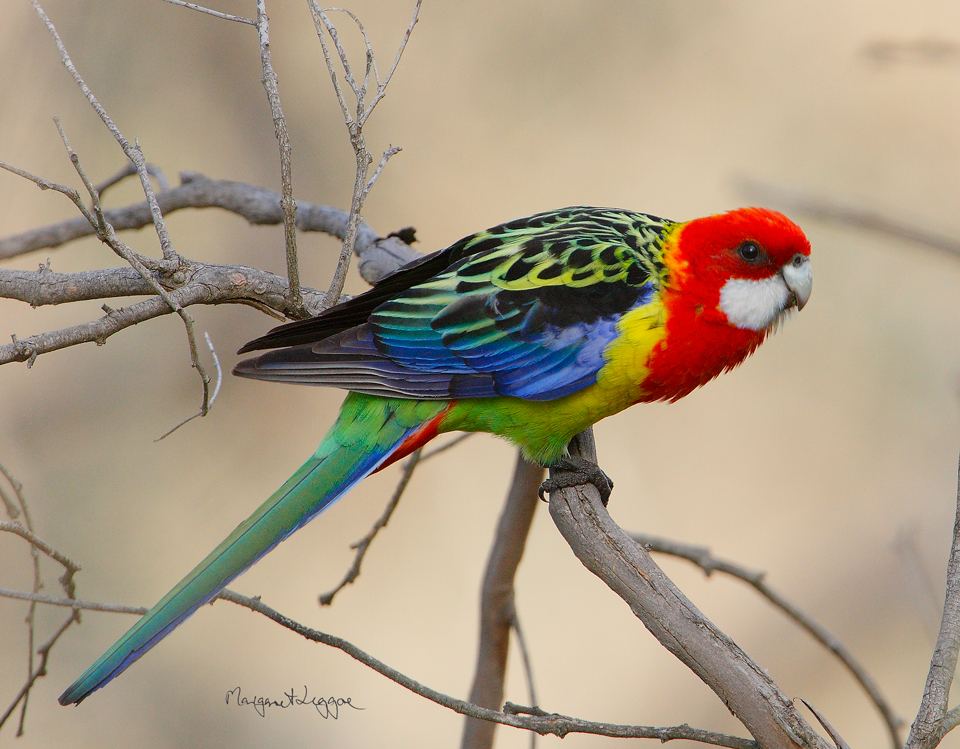
Platycercus eximius
SUBFAMILY
Psittacinae
TAXONOMY
Psittacus eximius Shaw, 1792, New South Wales. Three subspecies.
OTHER COMMON NAMES
English: Rosella, rosella parrot, red rosella, common rosella,
golden-mantled rosella; French: Perruche emnicolore; German:
Rosellasittich; Spanish: Perico Multicolor.
PHYSICAL CHARACTERISTICS
12 in (30 cm); 3.2–4.3 oz (90–122 g). Bright plumage with
scale-like black marking on the back; red head.
DISTRIBUTION
P. e. eximius: southeastern Australia north to northeast New
South Wales. P. e. elecica: northeast New South Wales and
southeast Queensland. P. e. diemenensis: Tasmania.
HABITAT
Most types of open, lightly wooded country, including farmlands
and orchards; favors trees bordering watercourses and has
successfully colonized human-made habitats, especially golf
courses, but avoids dense, closed forest.
BEHAVIOR
Sedentary. Pairs or small groups familiar in or near urban centers,
where often seen perched on telegraph wires or sitting on
roadside fences; inconspicuous when feeding on the ground,
but easily identified by characteristically undulating flight and
whistling call-notes; more active in cool or wet weather, at
other times resting during middle of day.
FEEDING ECOLOGY AND DIET
Feeds primarily on seeds procured on the ground, but also
takes seeds, fruits, and blossoms in trees or shrubs, especially
eucalypts and acacias; fond of cultivated fruits.
REPRODUCTIVE BIOLOGY
Monogamous, mated pair being the basic social unit. Courtship
display features “squaring” of shoulders and agitated sideways
wagging of fanned tail to the accompaniment of chattering
notes. Defends territory in immediate vicinity of nesting tree;
nest in tree hollow, sometimes in crevice in wall of building;
clutch of four or five eggs incubated by female for 19 days;
chicks fed by both parents; fledging at 32 days.
CONSERVATION STATUS
Abundant throughout most of its range; benefits from landclearing
and crop-growing; in 1990s population estimated to
exceed 500,000 and stable or increasing.
SIGNIFICANCE TO HUMANS
Popular cagebird; can cause damage in orchards.
Other popular Animals
Photo Gallery of - Eastern rosella




 Animalia Life
Animalia Life